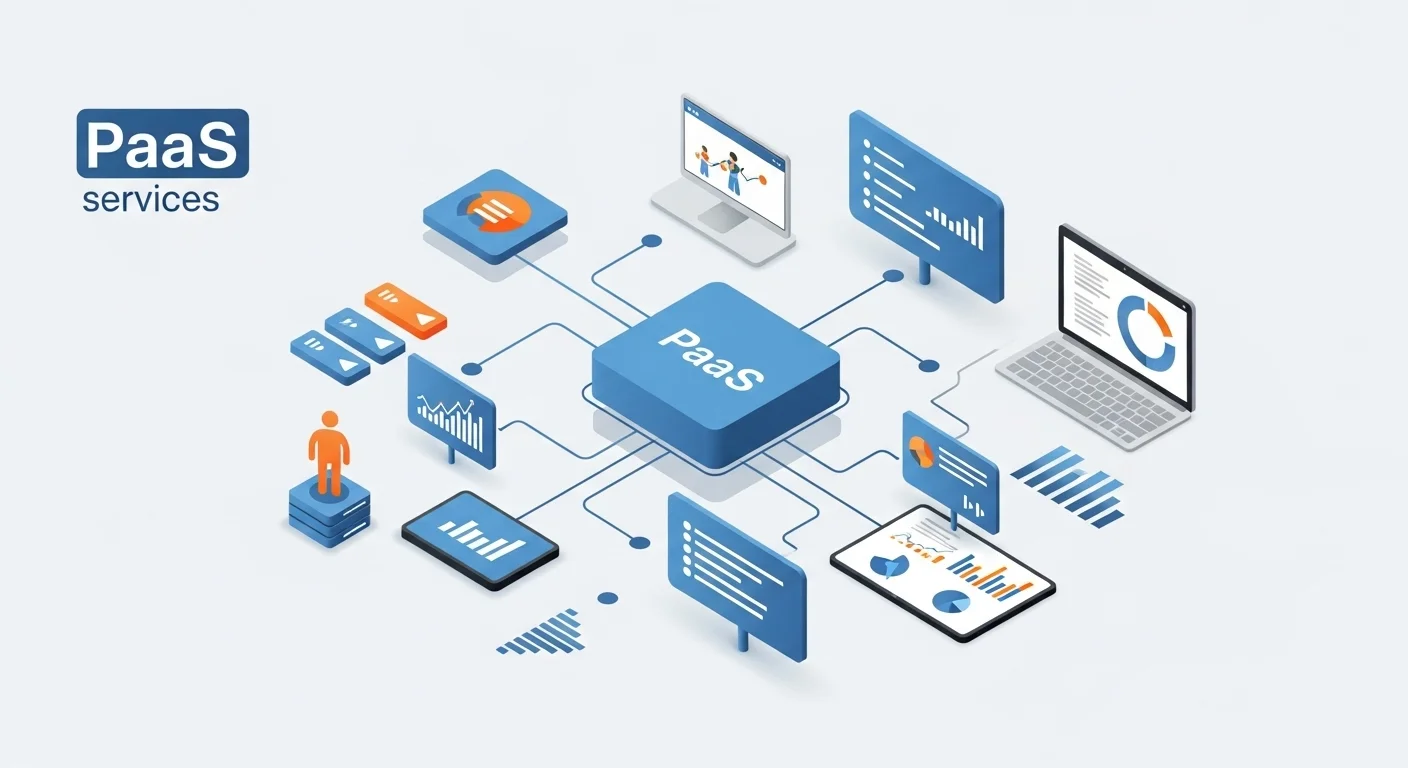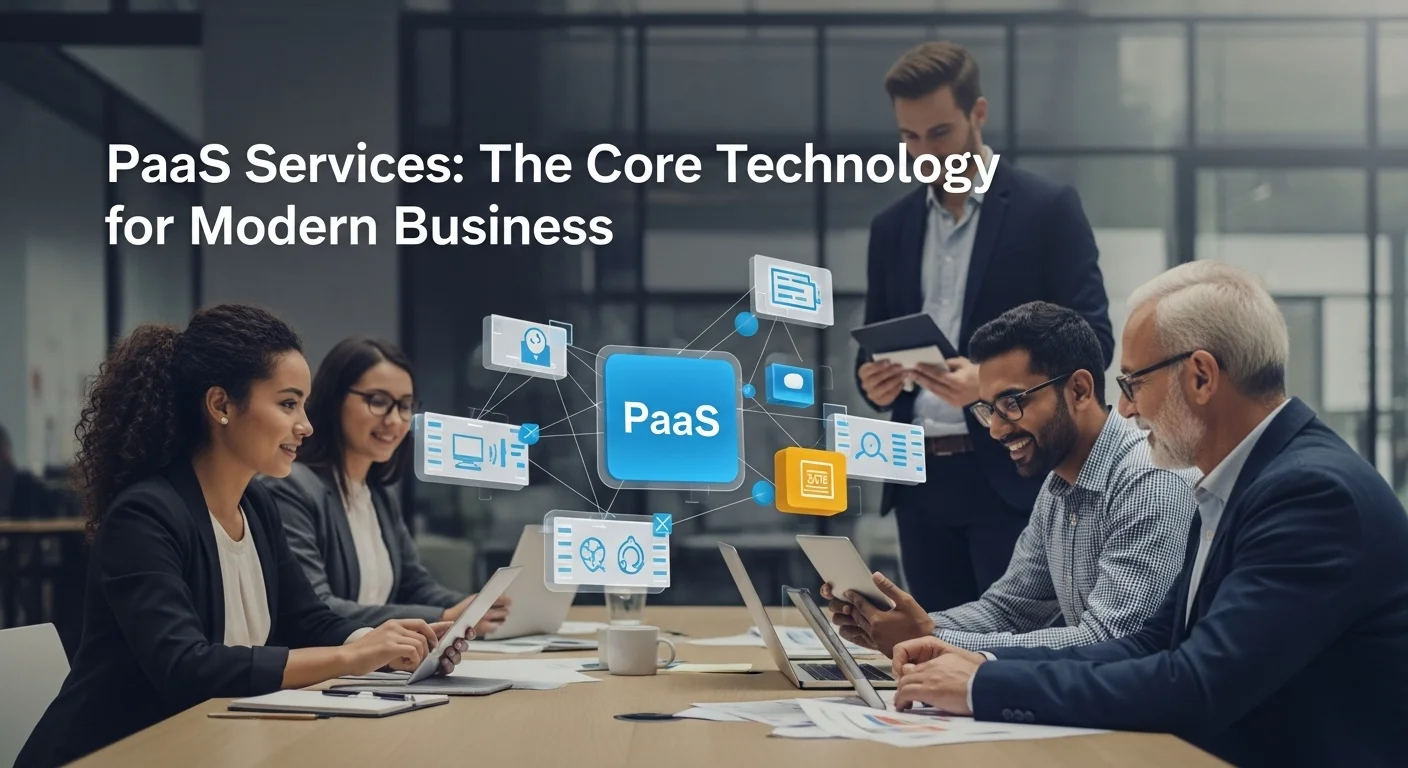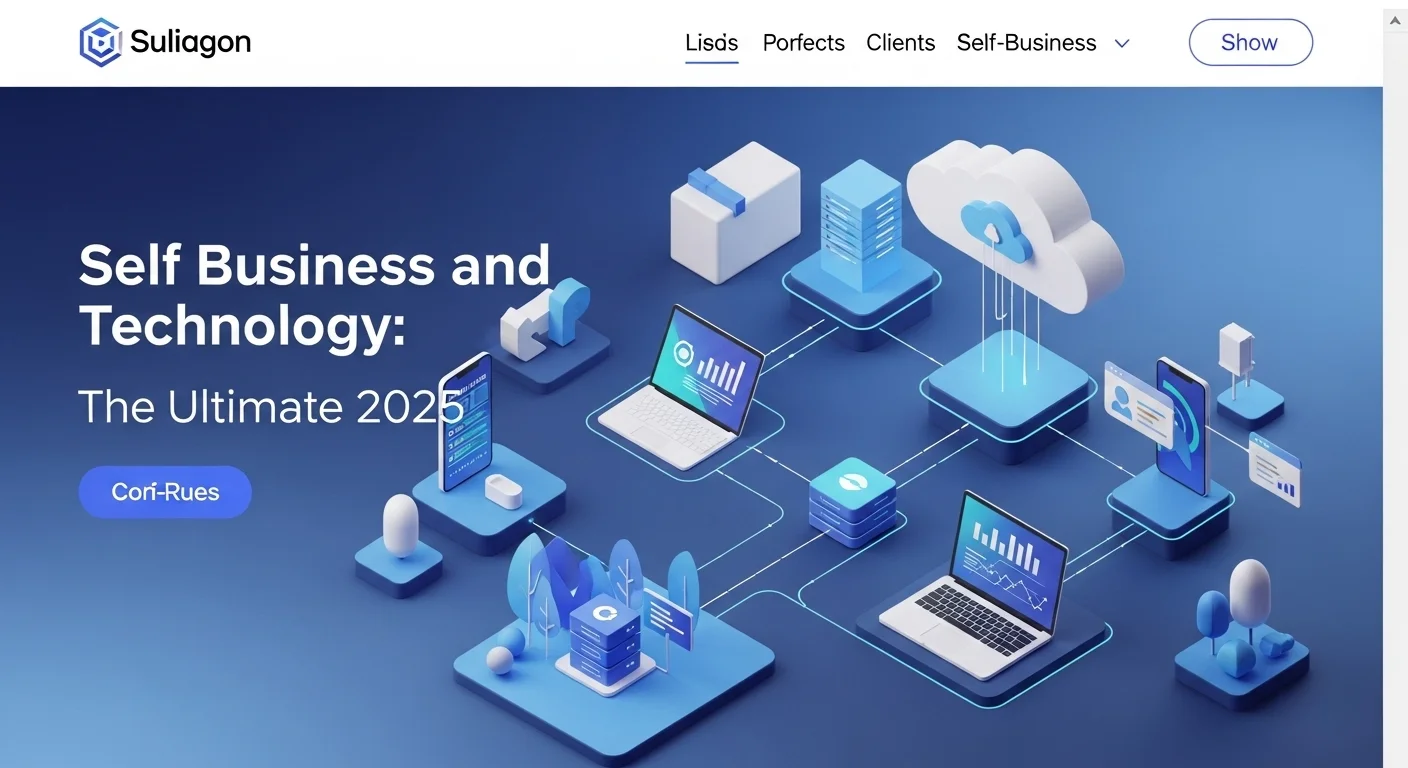What is PaaS? A Plain-English Guide to the Cloud’s Secret Weapon

Executive Summary
I've spent years helping businesses navigate the cloud, and one of the most misunderstood yet powerful tools is Platform as a Service, or PaaS. It's not just another piece of tech jargon; it's the ultimate launchpad for building modern applications. PaaS acts as the perfect middle ground in the cloud world, sitting right between the raw hardware of IaaS and the ready-to-go software of SaaS. It gives developers a complete workshop—tools, environment, and all—without forcing them to build the workshop from the ground up. In this guide, I'll walk you through what PaaS really is, using simple analogies I've shared with countless clients. We'll explore how it speeds up projects, saves money, and gives businesses a real competitive edge. Forget the complex definitions; let's talk about what this technology actually does for you.
Table of Contents
Table of Contents
What is PaaS and Why Does It Matter?
In today's fast-paced digital world, the ability to build and launch new ideas quickly is everything. For years, I've seen teams get bogged down not by the quality of their ideas, but by the sheer complexity of the underlying technology needed to bring them to life. This is the exact problem Platform as a Service (PaaS) was born to solve. At its heart, PaaS is a cloud service model that provides a ready-made platform for developers to build, test, and deploy applications. It handles all the tedious, behind-the-scenes work so your team can focus on what truly matters: creating amazing software.
To explain it, I love using a house-building analogy. Imagine you want to open a new restaurant. The traditional, on-premise way is like buying land and building everything yourself—the foundation, walls, plumbing, electrical, kitchen equipment. It gives you total control, but it's incredibly slow and expensive. Then there's Infrastructure as a Service (IaaS), which is like leasing an empty building. You get the structure and utilities, but you still have to install the kitchen, ovens, and everything else. But with PaaS, it's like leasing a fully equipped, state-of-the-art restaurant kitchen. The ovens are installed, the gas is connected, the workstations are ready. You just walk in with your chefs and your recipes and start cooking. PaaS abstracts away the servers, storage, networking, and operating systems, which is a massive weight off any development team's shoulders. This isn't just a convenience; it's a strategic advantage that fuels innovation.
The Cloud Family: IaaS, PaaS, and SaaS Explained
To really get PaaS, you have to see where it fits in the cloud family. IaaS, PaaS, and SaaS are the three main flavors of cloud computing, and I've helped countless businesses decide which one—or which combination—is right for them.
- Infrastructure as a Service (IaaS): This is the foundation. Here, a provider rents you the fundamental computing resources—servers, storage, networking. Think of it as the raw building blocks. You have the most control but also the most responsibility. You're still managing operating systems, middleware, and all your applications. Providers like Amazon Web Services (AWS) EC2 or Google Compute Engine are classic examples.
- Platform as a Service (PaaS): This is our sweet spot. PaaS builds on IaaS. The provider manages the infrastructure *and* the platform layer, which includes operating systems, development tools, and database management. Your team only has to worry about building and managing their own application. It's designed specifically to make a developer's life easier across the entire application lifecycle.
- Software as a Service (SaaS): This is the most hands-off model. You're essentially renting a fully-baked application that is delivered over the internet. Think of Gmail, Salesforce, or Slack. You don't manage anything; you just use the software. It offers the least control but also requires the least technical effort from you.
Think of it as a pyramid: IaaS is the base, PaaS is the middle layer built on that base, and SaaS applications are often built on top of a PaaS platform. Understanding this hierarchy is the first step in making smart cloud strategy decisions.
The Real-World Impact of PaaS
The importance of PaaS isn't theoretical; it has a direct and profound impact on how businesses operate. I've seen it firsthand transform development workflows.
1. Get to Market Insanely Fast: This is the number one benefit I highlight to executives. With PaaS, developers can spin up a complete development environment in minutes, not weeks or months. There's no waiting on IT to provision servers. This speed means you can launch products and respond to customer feedback faster than your competitors.
2. Unleash Developer Creativity: When you free developers from managing infrastructure, they can focus on coding and solving real business problems. I've seen productivity and morale skyrocket when teams switch to PaaS because they can spend their time on creative, high-value work instead of tedious server maintenance.
3. Smarter Spending: PaaS shifts your costs from a huge upfront investment in hardware (Capital Expenditure) to a predictable, pay-as-you-go operational cost (Operational Expenditure). This makes advanced technology accessible to everyone, from startups to large enterprises, and eliminates the cost of over-provisioning hardware you don't use.
4. Scale Without the Headaches: One of the most beautiful things about PaaS is its elasticity. Your application can automatically scale to handle a sudden surge in traffic—like a Black Friday sale—and then scale back down so you're not paying for idle resources. This is incredibly difficult and expensive to achieve on your own.
5. Work Together, from Anywhere: In an age of remote work, having a unified, cloud-based platform is essential. PaaS allows distributed teams to collaborate seamlessly, as everyone is working from the same environment and toolset. It's a natural fit for a modern, agile DevOps culture.
PaaS in Action: Everyday Business Uses
The flexibility of PaaS makes it a powerhouse for a variety of projects. I've seen it used to build:
- Web and Mobile Apps: The most common use case. An e-commerce business can build a scalable shopping app that never crashes during the holidays.
- APIs: In our connected world, APIs are the glue holding software together. PaaS makes it simple to build, manage, and secure APIs for internal use or for partners.
- Internet of Things (IoT): For companies building IoT solutions, PaaS provides the scalable backend needed to ingest and process data from millions of devices.
- Business Analytics: Many PaaS platforms include powerful analytics tools, allowing businesses to analyze data and uncover insights without building a complex data infrastructure.
- AI and Machine Learning: A new wave of AI-focused PaaS offerings is making it easier than ever to build intelligent features, like recommendation engines or chatbots, into applications.
It's clear that PaaS isn't just another option; for many, it's the most logical choice. It strikes the perfect balance between control and convenience, making it an essential tool for any business serious about innovation.

A Look Under the Hood: The PaaS Architecture
As a developer or architect, you don't need to manage the PaaS infrastructure, but understanding how it's built helps you use it more effectively. Think of it as a layered cake, where the provider bakes it and you just add the frosting. I always walk my technical teams through this so they know the ground they're building on.
- The Foundation (Infrastructure Layer): At the very bottom, you have the raw hardware in data centers—servers, networks, storage. On top of this runs virtualization software that creates the virtual machines. This is pure IaaS, and the PaaS provider manages every single bit of it, from cooling systems to hardware failures.
- The Workshop (Platform Layer): This is the core of the PaaS magic. It's a collection of software and services running on the infrastructure that developers interact with. It includes the operating systems (which are patched and updated by the provider), middleware like web servers and database systems, and most importantly, the runtime environments for languages like Python, Java, or Node.js. When you deploy your code, this layer ensures the right environment is ready to execute it.
- Your Creation (Application Layer): This top layer is where your code and data live. But you're not alone up here. The PaaS provides a whole suite of tools to support you: a web-based dashboard or command-line interface (CLI) to manage everything, integrations with code repositories like Git, and powerful orchestration services that handle deployments, scaling, and health monitoring automatically.
This layered model is the key to the entire cloud service family. IaaS gives you access to the foundation, PaaS gives you the workshop, and SaaS gives you the finished product made in that workshop.
How to Choose the Right PaaS Provider
Choosing a PaaS provider is a long-term commitment, like choosing a business partner. I've guided many companies through this decision, and I always advise them to look beyond the marketing and focus on these critical factors:
- Languages and Frameworks: This is a non-negotiable first step. Does the platform robustly support the tech stack your team knows and loves? I also recommend looking for 'polyglot' platforms that support multiple languages, giving you flexibility for future projects.
- Scaling Power: Dig into how the platform handles scaling. Does it offer automatic scaling? Can it scale both out (more machines) and up (more powerful machines)? You need to trust that it can handle your peak demand without breaking a sweat.
- Ecosystem & Integrations: A PaaS platform becomes exponentially more valuable with a rich ecosystem. Does it offer easily integrated services like managed databases, caching, or machine learning tools? Look at providers like AWS Elastic Beanstalk, Google App Engine, or Microsoft Azure App Services, which have vast marketplaces of connected services.
- Deployment Models (Public, Private, Hybrid): Most people start with public PaaS, which is hosted in the provider's cloud. But some companies, for security or compliance reasons, need a private PaaS on their own infrastructure. A hybrid approach offers the best of both worlds. Know which model fits your needs.
- The Price Tag: The pay-as-you-go model sounds simple, but you have to read the fine print. Are you charged per hour, per request, or for data transfer? Use the provider's pricing calculators to estimate your real-world costs. I always remind clients to think about Total Cost of Ownership (TCO), which includes the money you *save* on staff and hardware.
- Security & Compliance: Security is a partnership. Understand what the provider secures versus what you're responsible for. If you're in a regulated industry like finance or healthcare, make sure the provider has the certifications you need (like PCI DSS or HIPAA).
- Avoiding Vendor Lock-in: This is a big one I always warn clients about. If you rely too heavily on a provider's proprietary APIs, moving your app later can be a nightmare. I strongly favor PaaS solutions built on open standards like Docker containers and Kubernetes. A platform like Red Hat OpenShift is a great example of this, offering power without trapping you.
Beyond Technology: Integrating PaaS into Your Business
Adopting PaaS is a cultural shift, not just a technical one. To get the most out of it, the whole business needs to be on board.
1. Fueling a DevOps Culture: PaaS is a dream for DevOps. By automating deployments and providing a single platform for developers and operations, it breaks down old silos. This paves the way for a smooth CI/CD (Continuous Integration/Continuous Deployment) pipeline, meaning you can release better software, faster.
2. Financial Agility: I've seen CFOs light up when they understand the move from CapEx to OpEx. Instead of tying up cash in hardware that loses value, you have a predictable operating expense. This frees up capital to invest in what actually grows the business.
3. A Playground for Innovation: With PaaS, the cost of trying something new is incredibly low. Your team can spin up a prototype to test a new idea in an afternoon. If it works, you scale it. If it fails, you shut it down with minimal loss. This culture of safe experimentation is how market leaders are born.
4. Focus on What You Do Best: Unless you're in the business of running data centers, it's not your core competency. Outsourcing the platform management to a PaaS provider lets your smartest people focus on what makes your company unique and valuable to your customers.
Ultimately, your choice between IaaS, PaaS, and SaaS depends on your needs. I've seen companies successfully use all three: SaaS for their email and CRM, PaaS for their custom public-facing applications, and IaaS for some highly specialized, heavy-duty processing. A mature cloud strategy isn't about choosing one; it's about using the right tool for the right job.

Pro Tips for PaaS Implementation
Getting started with PaaS is easy, but mastering it takes strategy. Over the years, I've seen what separates the successful PaaS adoptions from the ones that struggle. Here are some of my hard-won lessons and best practices that I share with every team.
1. Put Security First, Always: The provider secures the platform, but you are always responsible for securing your application. This is a partnership you can't ignore.
- Think Like an Attacker: Before you even start coding, conduct threat modeling. It's far easier to design security in from the beginning than to patch it on later.
- Use Strict Access Controls: Follow the principle of least privilege. Give every user and service the absolute minimum permissions they need. Don't share accounts and enforce multi-factor authentication.
- Encrypt Everything Sensitive: Your data should be encrypted both when it's moving over the network (in transit) and when it's stored on a disk (at rest). Most PaaS providers make this easy, so there's no excuse not to.
- Know Your Platform's Tools: Dive deep into the security features your PaaS offers. Learn how to use its web application firewall (WAF), monitoring tools, and vulnerability scanners. They are there to help you.
2. Automate Everything with CI/CD: The real speed of PaaS is unlocked through automation. A solid Continuous Integration/Continuous Deployment (CI/CD) pipeline is not optional; it's essential. This means automatically building, testing, and deploying your code every time a change is made. This practice catches bugs early and allows you to release new features safely and without downtime.
3. If You Can't See It, You Can't Fix It: You need visibility into your application. Without good monitoring and logging, you're flying blind when something goes wrong.
- Centralize Your Logs: Don't try to check logs on individual instances. Funnel all your logs into a single, searchable platform like Splunk or Datadog. It will save you hours of pain during an outage.
- Monitor Performance (APM): Use Application Performance Monitoring (APM) tools to get a deep, real-time view of your app's health, identify performance bottlenecks, and track user experience.
- Set Smart Alerts: Don't wait for a customer to tell you your site is down. Configure alerts to notify your team instantly about critical issues like high error rates or slow response times.
4. Master Your Costs: The pay-as-you-go model can be a blessing or a curse. Without discipline, costs can spiral.
- Right-Size Your Resources: Constantly monitor your usage and make sure you're not paying for oversized instances.
- Be Smart with Auto-scaling: Auto-scaling is powerful, but always set a maximum limit. I've seen a simple coding bug trigger an infinite scaling loop that resulted in a shocking bill.
- Use Budgeting Tools: Your cloud provider has tools to help you track spending and set budget alerts. Use them religiously.
5. Design for Failure: Things will break. The network will glitch. A service will go down. A resilient application is one that is designed to withstand these failures gracefully. Use patterns like microservices to isolate failures, and for critical applications, deploy across multiple geographic regions so an outage in one area doesn't take you offline.
The Best Tools to Pair with Your PaaS
A great PaaS platform becomes even better when you pair it with the right tools. Here are some of the key technologies that work in perfect synergy with PaaS:
- Infrastructure as Code (IaC): Using tools like Terraform allows you to define your entire PaaS environment in code. This makes your setup repeatable, version-controlled, and easy to manage.
- Containerization (Docker & Kubernetes): This is the modern standard. Packaging your application in a container ensures it runs the same way everywhere. Many modern PaaS platforms are now built on top of Kubernetes, giving you the ease of PaaS with the portability of containers. This is your best defense against vendor lock-in.
- Serverless Computing (FaaS): Often seen as the next step beyond PaaS, Function-as-a-Service (like AWS Lambda) lets you run small pieces of code in response to events without thinking about servers at all. I often advise teams to build their core application on PaaS and use serverless functions for specific, event-driven tasks.
- AI/ML Platforms: To build truly intelligent apps, you'll want to integrate with a specialized AI PaaS like Google Cloud AI Platform or Amazon SageMaker. These services simplify the complex process of training and deploying machine learning models.
Lessons from the Trenches: A Real-World PaaS Story
I remember working with a fintech startup that was in a race to launch a new mobile banking app. They had a brilliant team, but they were small and competing against massive banks. Their secret weapon was PaaS. By choosing a secure, compliant PaaS, they skipped the months it would have taken to build and certify their own infrastructure. They used the platform's built-in CI/CD tools to release updates multiple times a day. When they launched, a marketing campaign went viral, and their user load spiked 100x overnight. Their auto-scaling rules kicked in flawlessly, and the app never slowed down. They told me later that PaaS was the only reason they survived that success and beat their larger competitors to market. It allowed them to pour all their energy into what made their app special, not into managing servers.
To keep learning, I recommend checking out the official documentation for a major platform like AWS Elastic Beanstalk. Seeing how a leading provider explains their own service offers invaluable, practical insights. By combining these strategies with a commitment to continuous learning, you can turn your PaaS platform into a true engine for growth.
Expert Reviews & Testimonials
Sarah Johnson, E-commerce Owner ⭐⭐⭐⭐
This was so much clearer than other articles! As a small business owner, the house-building analogy really clicked. I wish there was a short section comparing pricing models of the big providers.
Mike Chen, IT Consultant ⭐⭐⭐⭐⭐
Fantastic and practical guide. The 'Choosing a Provider' checklist is spot on and covers the same points I discuss with my clients. The emphasis on avoiding vendor lock-in is crucial. Great job.
Emma Davis, Junior Developer ⭐⭐⭐⭐⭐
This is the best explanation of PaaS I've read. It helped me understand where the tools I use every day fit into the bigger picture. The pro tips in the last section are super helpful for someone new like me. Thank you!



